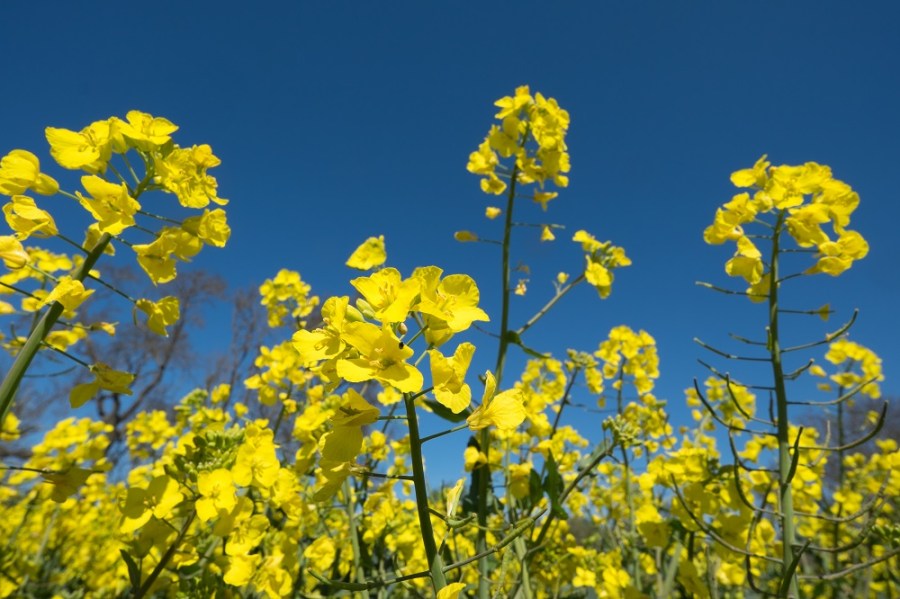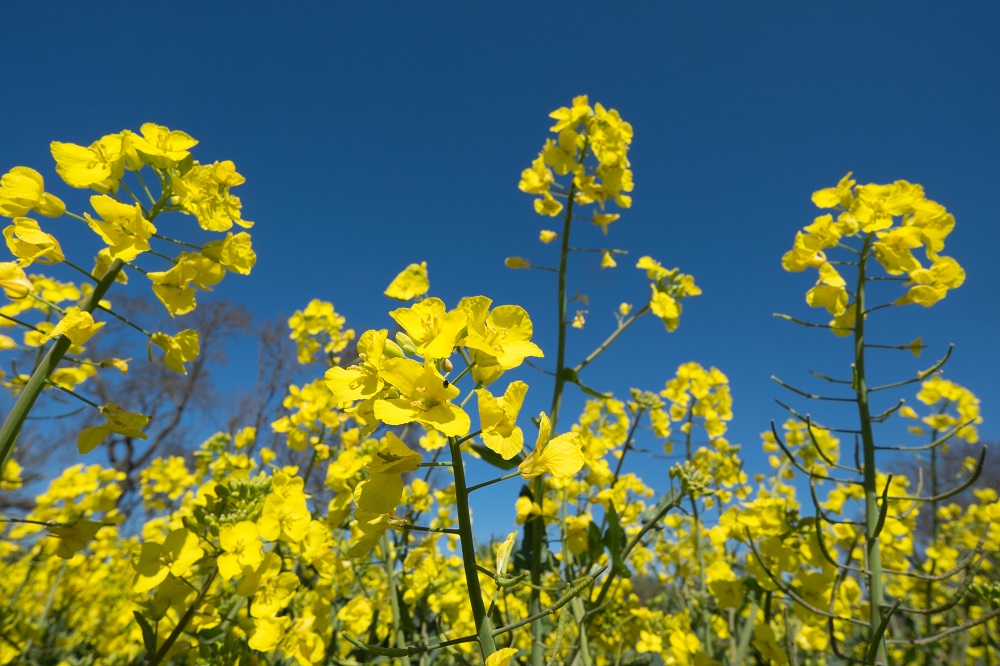
Bayer made a strong debut into the UK oilseed rape market with its first hybrid oilseed rape variety in 2013, and now aims to push its hybrid programme even further with InVigor 1030 and InVigor 1020. CPM finds out what’s in store.
All UK InVigor varieties have high phoma scores and high oil content as standard.
By Melanie Jenkins
Bayer has promoted its InVigor hybrid oilseed rape varieties on their good disease resistance and high oil contents, and these are features both InV1030 and InV1020 have in spades.
InV1020 has the highest oil content of any variety available, points out Bayer seeds product manager Sarah Middleton, and this builds on its predecessors Harper and Fencer, taking the best parts of both these varieties and improving them, she says. “Combining gross output and agronomic features, it’s best suited to the East/West region.”
Stand-out combination
InV1030 has a stand-out combination of resistance to light leaf spot (LLS) and phoma stem canker, as well as high oil content. “It has the best combination of agronomic characteristics of any variety and is one of the earliest maturing varieties available,” she adds. InV1030 has a score of 9 for phoma and a 7 for light leaf spot and is particularly competitive on gross output in the North region.
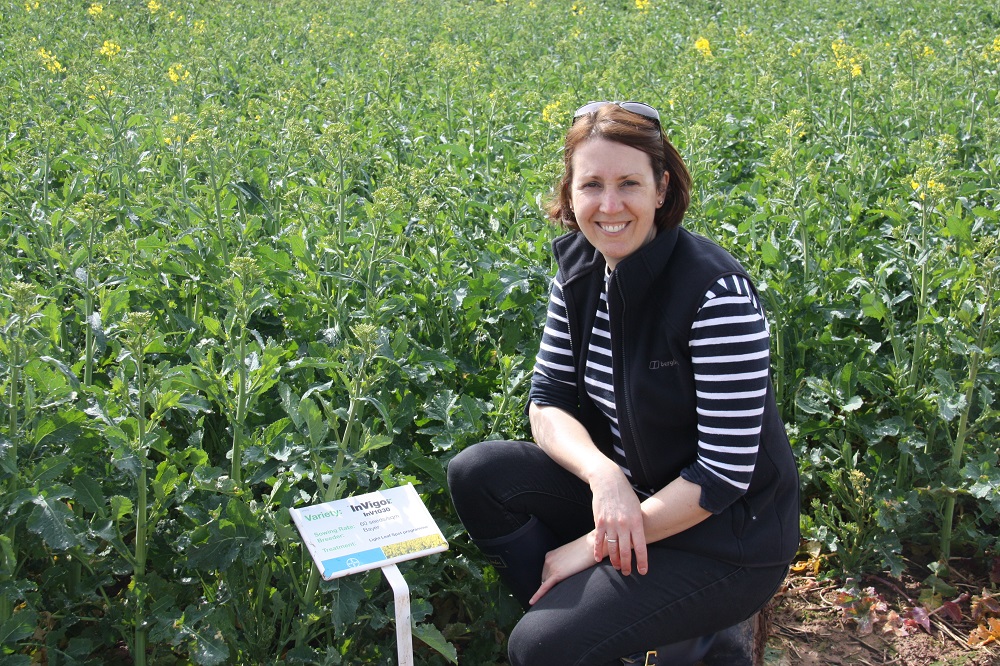
Bayer is working at progressively increasing oil content and improving LLS resistance, says Sarah Middleton.
“All of our current UK InVigor varieties have high phoma scores and high oil content as standard, including the RLM 7 phoma resistance gene, giving them a score of at least 8,” explains Sarah Middleton.
Bayer is working at progressively increasing oil content and improving LLS resistance as well as some other developments. “We’re aiming to bring more competitive varieties to the market for growers as a higher oil content brings a significant additional income to them.”
InV1030 is getting on for 47% oil, which would yield an additional 10.5% oil bonus, says Carol Norris, seed development manager at Bayer. In order to maximise the oil content, she suggests applying no more than 170kgN/ha, making sure there’s enough sulphur.
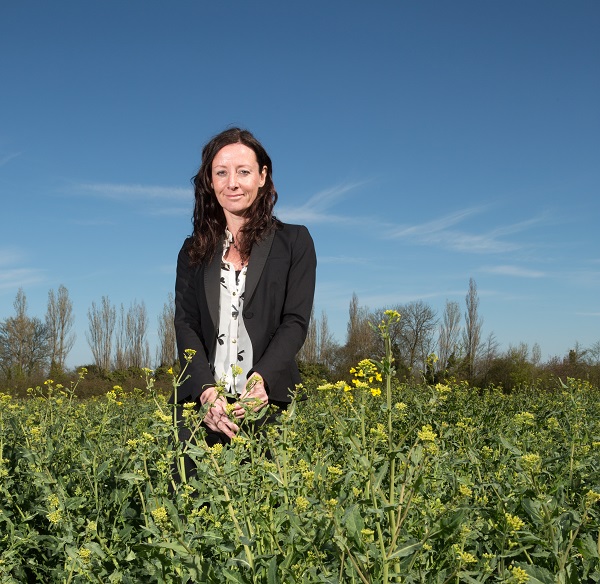
InVigor 1020 copes with later drilling and harsher conditions, says Carol Norris..
Looking at the disease ratings of the recommended varieties, there aren’t many with a high phoma resistance, points out Carol Norris. “InVigor 1030 has a better disease resistance than anything we’ve had before, while InVigor 1020 has all the best features of Harper and Fencer but with better oil content, which it’s top of the range for,” she explains.
“InVigor 1020 is able to have its boundaries pushed a bit; with later drilling and harsher conditions, whereas InVigor 1030 is less flexible and would need to be drilled from mid Aug to mid Sept. Both varieties will then just shoot on up out of the ground,” says Carol Norris.
InV1030 is medium to late flowering but medium maturing, whereas InV1020 is medium flowering and early to medium maturing. “This can allow farmers to stagger harvesting.”
Not overly competitive
But when it comes to gross output and yield, neither InV1020 nor InV1030 are overly competitive across the East/West region, reckons Bill Handley, Recommended List technical manager at AHDB Cereals and Oilseeds. “Both were somewhat off the pace,” he says.
InV1030 was the better of the two varieties because of its good disease resistance ratings, which is why it made the candidate list, but at 102% of the control for gross output, it sits at the bottom of the East/West candidate list. “InVigor 1030 did relatively better in the North though and very importantly had very good LLS resistance,” he adds.
Simon Kightley, oilseeds expert at NIAB, also points out that, while InV1030 is looking very good in the North region candidate set, it’s not the best variety for gross output on the East/West candidate list. “It was likely taken on as a candidate due to its good disease resistance, rather than for its yield,” he says.
“InVigor 1020 has somewhat lower gross output and less good disease resistance than InVigor 1030, putting a bit of daylight between the two varieties.”
So do these varieties live up to the hype and resources that have gone into the InVigor brand?
Frontier’s David Waite says that InV1030 stood out in trials as it was very clean of disease. “It’s the top performing candidate variety in the North with the best combined resistance for phoma and LLS and is also exceptionally vigorous at getting away in the autumn.”
He also thinks that growers in the North are likely to switch from Harper to InV1030. “The reality is, with most modern OSR varieties, they’re not hugely different.”
Andrew Gilchrist, managing director at Scottish Agronomy, has had some experience of InV1030 in trials in Scotland. “I look at hundreds of varieties every year but InVigor 1030 did take my eye last year because of its big seed pods and its canopy,” he says.
“It’ll all boil down to yield though – it was one of our top yielders last year but because it’s a candidate, it’s a bit early for growers to be showing much interest.”
Good impression
InV1020 is also making a good impression in the seed trade, says Stephen Taylor, grain trading manager at Woodheads Seeds. “There are so many varieties on the recommended and candidate lists there’s almost too much choice. But on the information I’ve seen and judging by Harper, it looks like a step up.”
Stephen Taylor reckons InV1020 could achieve 5-7% of Woodheads’ seed market this year but says it needs more trial data behind it. “By autumn 2017 it should be in a position to make headway on the market and those who’ve had success with Harper will give it a try.”
Looking at InV1020 from an agronomic angle, ProCam’s Will Miller says that it has a strong package across the board, with no major weaknesses. “It’s vigorous to establish, has excellent phoma resistance, good LLS resistance, it gets up and goes in the spring and isn’t late to mature like some high yielding varieties – it ticks a lot of boxes.”
Although InV1020 didn’t make the AHDB candidate list, its agronomic profile could make it one of ProCam’s leading varieties in a few years, he adds.
Will Charlton of Bayer suggests both varieties will benefit from a single hit of prothioconazole in the autumn. “Time an application for later on in the autumn, around Nov, as the phoma resistance is strong and robust, meaning any onset should be delayed due to the resistance of the variety,” he says. The later application allows for LLS protection as well as phoma in one hit, to help cut back on fungicide usage.
“Follow this up with another application of prothioconazole in spring if there’s any sign of disease before stem extension, or if 15% of the crop is infected, post stem extension. As LLS is a risk from Oct to Apr, varieties like InVigor 1030 and InVigor 1020 have a disease profile that’s intrinsic to offering protection for that length of time,” explains Will Charlton.
“LLS control becomes increasingly important with adverse weather. This year, there was nothing stopping disease spreading in the winter, so resistance really helps to alleviate the risk when it’s difficult to apply fungicide,” he adds.
Presently, InV1030 is only available from Frontier while InV1020 is available through 10 different seed merchants. From autumn 2016 all Bayer seed agents will have access to an InVigor numbered variety.

Clean performer in strip trials
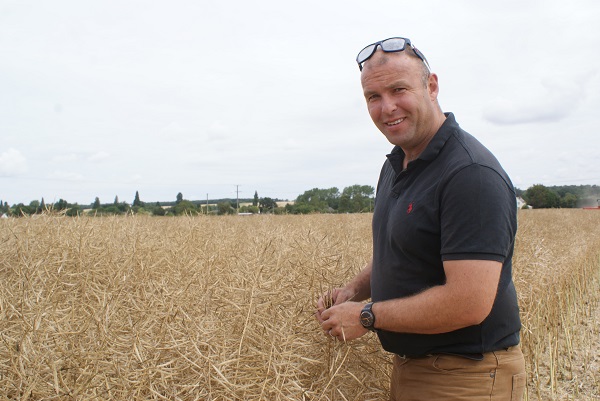
The main appeal of InV1030 for Russell McKenzie is the twin disease rating.
Russell McKenzie is currently growing a strip trial plot of InV1030 near Old Weston, Huntingdon, Cambs. He planted it on 2.5ha in a 20ha plot alongside other OSR varieties, the main ones being Harper and DK Extrovert. “I saw InVigor 1030 in trials last year where it looked good, so given the opportunity to try it, I decided to grow some, and it went in with my standard varieties last autumn,” he says.
It was planted on 26 Aug 2015 using a Claydon hybrid drill, direct drilled into chopped wheat stubble on a heavy clay soil. With the aim to achieve 30-35 plants/m², Russell McKenzie drilled at a rate of 2.6kg/ha.
“It came through reasonably vigorously in the autumn, but DK Extrovert was marginally ahead of it.”
He says that the main appeal is the twin disease rating. “Light leaf spot is a big concern for me and I’ve seen a lot this spring.” InV1030 had one application of prothioconazole alongside Kerb on 19 Nov and had a second application in mid Mar, while other varieties required an extra application of tebuconazole.
“DK Extrovert hasn’t expressed LLS but Harper has, while InV1030 has been clean of LLS and phoma. Varieties with the RLM 7 gene have stayed noticeably clean with the LLS pressures.
“I walked the OSR on 19 Mar and there was no sign of LLS in either InV1030 or DK Extrovert.”
Russell McKenzie applied an average of 200kgN/ha in three splits – the first in the last week of Feb, the second in the third week of Mar and the last on 1 Apr before the crop got too tall.
Having to contend with blackgrass has meant that Russell McKenzie is extending his OSR rotation out to one in four years, with the aim to achieve one in five. “I’ll be aiming to get 4.5t/ha in yield, because if we’re not hitting 4t/ha then the economics of growing OSR come in to question. InVigor 1030 will need to yield at least as much as Harper and DK Extrovert,” he adds.
“So harvest will be the deciding factor – if it does as well or better, then, alongside the disease characteristics, it’ll be a win-win situation.”
Cautious welcome for promising candidate
Farm manager Mike Wilton likes to keep abreast of changes in the market place and OSR is no exception. He’s currently trialling InV1020, planted on 4ha near Fakenham in Norfolk. “I look at around two new varieties a year in small scale trials in order to evaluate them and see if they have a future in our growing system,” he says.
InV1020 was planted on 5 Sept using a BioDrill on the back of a Väderstad TopDown. It was drilled into a sandy loam soil at a seed rate of 40-45 seeds/m² in order to achieve 30-35 plants/m². The crop was planted behind winter barley and went in a little later than Mike Wilton would normally have liked. The seedbed had a base fertiliser of 30kg/ha of P and K based on soil analysis.
In the third week of Oct, InV1020 had an application of Proline (prothioconazole) to combat disease pressures, especially as it was being grown in a close rotation. “Even if disease isn’t active it’s never far away and if there had been earlier pressure to the crop, it would have had two applications.” Overall, Mike Wilton hasn’t seen much disease at all and InV1020 showed no more disease than any other variety he’s growing.
He hasn’t noticed much difference between InV1020 and DK Extrovert, which is being grown alongside it. “They’re pretty uniform but DK Extrovert would have had a slight edge,” he says.
During the spring, Mike Wilton applied a total of 220kg N/ha over three applications – one in mid Feb, one in early March and the last in late March. He also applied Proline in mid March along with a PGR to manage the canopy of the crop.
The phoma resistance of InV1020 wasn’t as appealing to Mike Wilton as that of DK Extrovert. “However, I’ve seen shift from phoma pressure to LLS, so InVigor 1020 is still a worthwhile candidate to consider growing this autumn,” he says.
InV1020 will need to hold its own against his other three leading varieties – DK Extrovert, Incentive and DK Explicit. “It’ll need to outdo one of these and I think it will. I hope we’ll make it our second or third 00 variety this autumn.”

